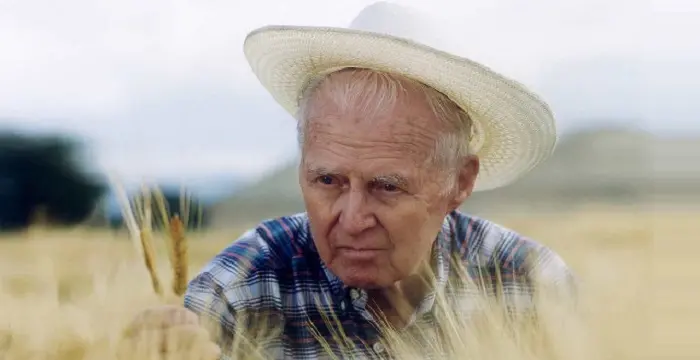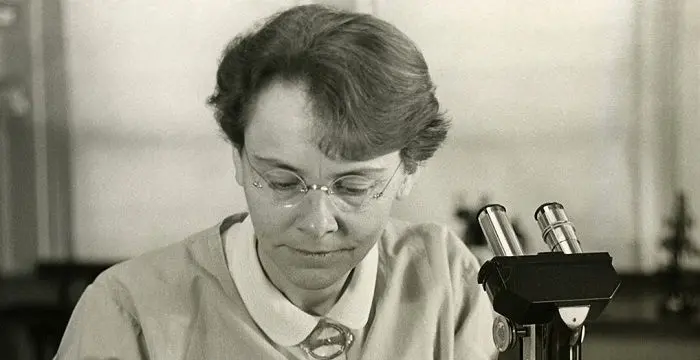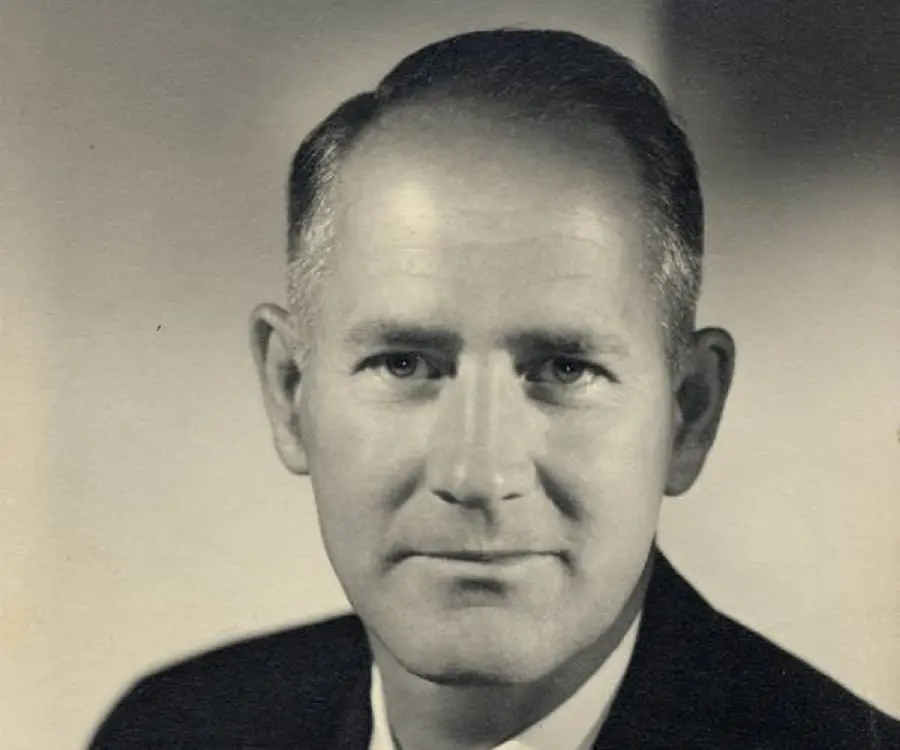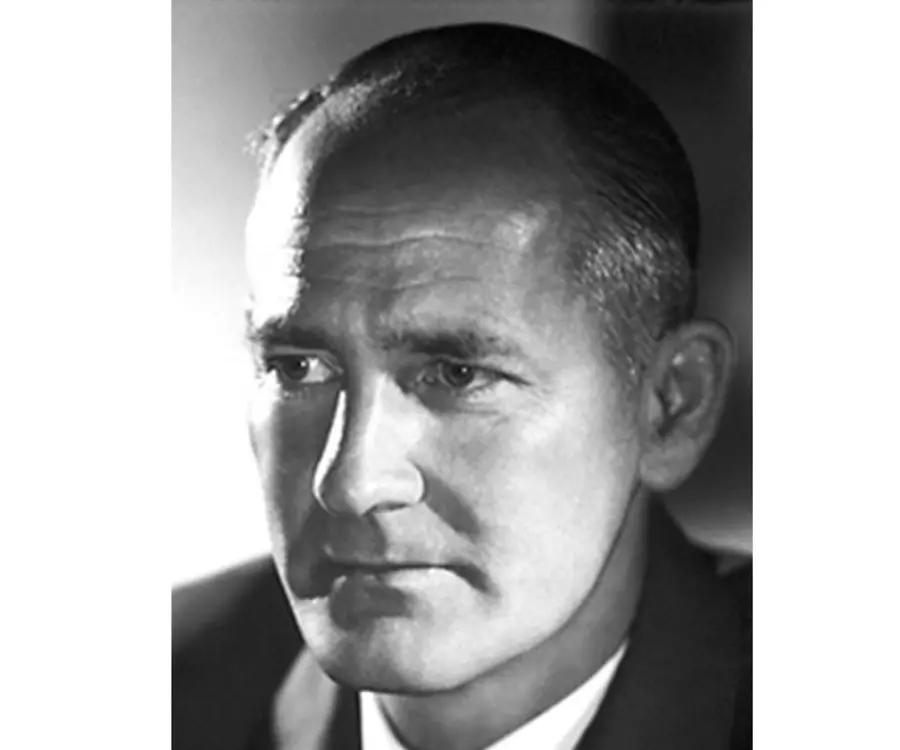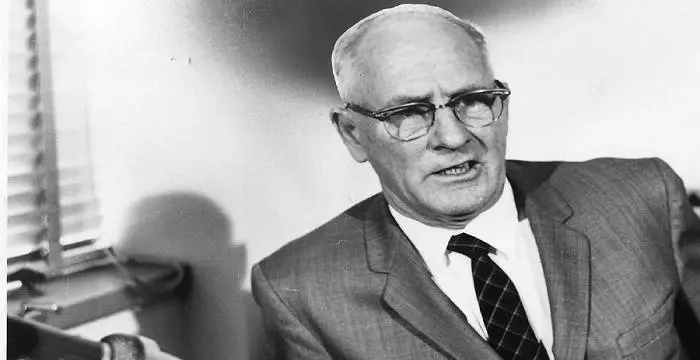
George Wells Beadle - Geneticists, Birthday and Family
George Wells Beadle's Personal Details
George Wells Beadle was an American geneticist who won the 1958 Nobel Prize in Medicine
| Information | Detail |
|---|---|
| Birthday | October 22, 1903 |
| Died on | June 9, 1989 |
| Nationality | American |
| Famous | Scientists, Geneticists |
| Hobbies | Gardening, Rockclimbing, Skiing |
| Birth Place | Wahoo, Nebraska, United States |
| Gender | Male |
| Sun Sign | Libra |
| Born in | Wahoo, Nebraska, United States |
| Famous as | Geneticist |
| Died at Age | 85 |
// Famous Geneticists
Norman Borlaug
Norman Borlaug was an American biologist known as the “Father of the Green Revolution”. This biography of Norman Borlaug provides detailed information about his childhood, life, achievements, works & timeline.
Gregor Mendel
Gregor Mendel was an Austrian scientist and monk credited with being the father of modern genetics for his pioneering work in the study of heredity. This biography provides detailed information about his childhood, life, achievements, & timeline.
Barbara McClintock
Barbara McClintock was a renowned American scientist who was awarded the Nobel Prize for her pioneering research on genetic transposition. To know more about her childhood, profile, timeline and career read on
George Wells Beadle's photo
Who is George Wells Beadle?
George Wells Beadle was an American geneticist who won the 1958 Nobel Prize in Medicine for discovering the role of genes in regulating biochemical events within cells. Born in Nebraska, United States, his father was a well-to-do farmer and it was expected that he would follow his footstep once he finishes his schooling. However, urged by his science teacher he first joined College of Agriculture under the University of Nebraska for his bachelor’s degree and then went on to earn his M.S. and PhD degree from the University of Cornell. Afterwards he received fellowship and did his postdoctoral from Caltech. However, his major work, for which he received the Nobel Prize, was done at the University of Stanford. Here he worked with Edward Tatum on Neurospora crassa. They found that the structure of a specific enzyme was determined by a specific gene and that each enzyme allowed a single chemical reaction to proceed. The concept is known as ‘one gene-one enzyme hypothesis’. Later, he shifted back to Caltech and as Chairman of its Biology Division he turned it into a center of excellence. He continued his research even after he retired and proved that genetically there is little difference between Teosinte and maize. However, owing to Alzheimer’s disease his last days were spent divorced from reality.
// Famous Scientists
Juliane Koepcke
Juliane Koepcke is a German-Peruvian biologist, who was the lone survivor among the 92 passengers and crew of the ill-fated LANSA Flight 508 that crashed in the Peruvian rainforest on 24 December 1971. Know more about her life in this biography.
Henry Cavendish
Henry Cavendish was a theoretical chemist and physicist, renowned for discovery of hydrogen and calculation of the mass of earth. To know more about his childhood, profile, timeline and career read on
Konstantin Tsiolkovsky
Konstantin Tsiolkovsky was a Russian rocket scientist and a pioneer of astronautics. This biography provides detailed information about his childhood, family, personal life, career, achievements, etc.
Childhood & Early Years
George Wells Beadle was born on October 22, 1903, in Wahoo, Nebraska. His father, Chauncey Elmer Beadle, was a well-to-do farmer with forty acres of land. He was also highly enterprising, hardworking and independent. His mother, Hattie Albro Beadle, died in 1908, when George was only five years old.
George Wells Beadle, lovingly called Beets, had an elder brother and a younger sister. Unfortunately, his elder brother too died in 1913 and so it fell upon ten year old Beadle to look after her younger sister and help his father at the farm in whatever way he could.
Beadle had his early education at Wahoo High School. It was an accepted notion that George would join the family farm once he passed out. But things turned out differently.
Beadle’s science teacher, Bess McDonald, recognized his talent and urged him to join College of Agriculture under the University of Nebraska for further education, which he did against the wish of his father. Beadle enjoyed his time there and finally received his bachelor’s degree in 1926.
Subsequently, he joined the Department of Plant Breeding at the College of Agriculture under the University of Cornell and earned his M. Sc. degree from there in 1927. Here, he worked on sterile mutants of maize and showed that mutants can affect the formation of the sex cells, egg, and pollen.
This work, published in fourteen papers, formed the basis for his doctoral thesis. His PhD paper was titled ‘Genetical and Cytological Studies of Mendelian Asynapsis in Zea mays’ and he received the degree in 1930.
In 1930, he also won National Research Council Fellowship for postdoctoral work at the California Institute of Technology. He therefore moved to Pasadena.
Career
George Wells Beadle joined California Institute of Technology in 1931 and continued with his work on maize. Subsequently, he joined the laboratory of Thomas Hunt Morgan and worked on Drosophila melanogaster (fruit fly) with other eminent scientists. His work led to realization that gene chemically influence heredity.
Some time now, he began to wonder how the process of embryonic development is determined by the genes. He then teamed up with visiting French embryologist Boris Ephrussi to investigate into the development of Drosophila with a special reference to its eye pigments.
In 1935, he went to Paris for six months. There at Institut de Biologie physico-chimique, Beadle and Ephrussi set out to determine if imaginal disc from one larva would develop into an eye when transplanted into another larva.
Finally they were able to produce an adult fly with three eyes, two in the normal head position and one in the abdomen. This work later became the foundation of his research on the genetics of the fungus Neurospora.
In 1936, he left Caltech to join the Harvard University as Assistant Professor. The following year he shifted to the University of Stanford and started working on the function of gene in detail. Sometime now, Edward Tatum joined his team and the two scientists started working in close collaboration.
Very soon they began to feel that Drosophila was not the best model for the work they were doing. They took up Neurospora crassa, a fungus that often grows on rotting vegetation and started experimenting with it.
Then in 1941, after a long and painstaking research, they came to the conclusion that each gene determined the structure of a specific enzyme, which in turn, affects the formation of the required metabolite. Their theory came to be known as ‘one gene - one enzyme hypothesis’.
In 1946, Beadle was invited to join the California Institute of Technology as Professor of Biology and Chairman of the Division of Biology, which he gladly accepted. Here he gave up active research and concentrate on turning the division into a center of excellence. .
It was also his vision to blend genetics and biochemistry to form a new discipline. He then recruited many brilliant scientists, who worked to advance his ideas and later spread the notion to other universities in the US. Much later it resulted in the birth of molecular genetics.
Beadle left Caltech in January 1961 to become the Chancellor of the University of Chicago. Later, that year, he became the President of this University. After retiring from there in 1968 he became the Director of the American Medical Association’s Institute for Biomedical Research and served the institute until 1970.
He continued experimenting even after he had formally retired from the active service. He grew a series of Teosinte/Maize crosses in several laboratories across the United States and also in Mexico. He finally demonstrated that Teosinte is the wild progenitor of maize.
In addition, he authored number of books. Among them are ‘An Introduction to Genetics’ (1939; with A.H. Sturtevant), ‘Genetics and Modern Biology’ (1963), and ‘The Language of Life’ (1966; with Muriel M. Beadle).
Major Works
Beadle is best known for his work on ‘one gene - one enzyme hypothesis’. He did this work in close collaboration with Edward Tatum. They first induced mutation in Neurospora by exposing it to X-ray and found that some of the sprouting cells were unable to grow in the minimal cultural medium they had been provided with.
These were then isolated and many normal metabolite began to be added to the cultural medium first in groups and then in singles. Finally after years of painstaking experimentation, the two scientists established that genes act through the production of enzymes.
They also concluded that each gene is responsible for producing a single enzyme and this enzyme, in its turn, affects a single step in a metabolic pathway. The theory was later dubbed as ‘one gene - one enzyme hypothesis’ and led to the formation of biochemical genetics.
Awards & Achievements
In 1958, George Wells Beadle received the Nobel Prize for Physiology or Medicine with Edward Tatum "for their discovery that genes act by regulating definite chemical events". They shared the prize with Joshua Lederberg, who received it for his work on genetics recombination.
In 1950, Beadle was awarded with the Albert Lasker Award for Basic Medical Research by the Lasker Foundation. Incidentally, the award is often referred as America’s Nobel Prize.
In 1984, he received Thomas Hunt Morgan Medal for his life time contribution to the field of genetics by the Genetic Society of America.
Personal Life & Legacy
In 1928, he met Marion Hill, who was then doing her MS in botany at the University of Cornell. They married in the same year and their son David was born in December 1931. However, trouble began once they returned to Caltech in 1946. Finally they divorced in the summer of 1953.
Not long after, Beadle married Muriel McClure Barnett, the well-known editor of the Women’s Section of the Los Angeles Times and adopted Muriel’s son, Redmond Barnett. Towards the end of their life, the couple shifted to a retirement colony in Pomona, California, where he led an active life tending to his garden.
When he was around eighty years old Beadle developed Alzheimer’s disease and over the course of time, it became so severe that he failed to connect with reality. He lived in this stage until his death on June 9, 1989.
In 1999, the Genetics Society of America established ‘The George W. Beadle Award’ in his honor. This is a prestigious award given to scientists who had made “outstanding contribution’” in the field of genetics.
The Beadle Center, which houses the Department of Biochemistry at the University of Nebraska-Lincoln, has been named after him. George W. Beadle also has a middle school named after him. Named George Beadle Middle School, it is part of the Millard Public Schools district.
Trivia
Although Beadle’s ‘one gene - one enzyme hypothesis’ was sufficiently verified by other scientists it has now undergone considerable sophistication. Today it is known that not all genes determine an enzyme and that some enzymes are made up of several short polypeptides.
// Famous American peoples
Wentworth Miller
Wentworth Miller is an American actor and screenwriter who achieved recognition for his role in the TV series ‘Prison Break’.
Jason Simpson
Jason Simpson is the son of former NFL running back, broadcaster and actor O. J. Simpson. Check out this biography to know about his childhood, family, life, and little known facts about him.
Melissa Brim
Melissa Brim is the ex-girlfriend of former professional boxer Floyd Mayweather Jr. Check out this biography to know about her birthday, childhood, family life, achievements and fun facts about her.
George Wells Beadle's awards
| Year | Name | Award |
|---|---|---|
Other | ||
| 0 | 1958 - Nobel Prize in Physiology or Medicine | |
| 0 | 1950 - Albert Lasker Award for Basic Medical Research | |
George Wells Beadle biography timelines
- // 22nd Oct 1903 To 1908George Wells Beadle was born on October 22, 1903, in Wahoo, Nebraska. His father, Chauncey Elmer Beadle, was a well-to-do farmer with forty acres of land. He was also highly enterprising, hardworking and independent. His mother, Hattie Albro Beadle, died in 1908, when George was only five years old.
- // 1913George Wells Beadle, lovingly called Beets, had an elder brother and a younger sister. Unfortunately, his elder brother too died in 1913 and so it fell upon ten year old Beadle to look after her younger sister and help his father at the farm in whatever way he could.
- // 1926Beadle’s science teacher, Bess McDonald, recognized his talent and urged him to join College of Agriculture under the University of Nebraska for further education, which he did against the wish of his father. Beadle enjoyed his time there and finally received his bachelor’s degree in 1926.
- // 1927Subsequently, he joined the Department of Plant Breeding at the College of Agriculture under the University of Cornell and earned his M. Sc. degree from there in 1927. Here, he worked on sterile mutants of maize and showed that mutants can affect the formation of the sex cells, egg, and pollen.
- // 1928In 1928, he met Marion Hill, who was then doing her MS in botany at the University of Cornell. They married in the same year and their son David was born in December 1931. However, trouble began once they returned to Caltech in 1946. Finally they divorced in the summer of 1953.
- // 1930This work, published in fourteen papers, formed the basis for his doctoral thesis. His PhD paper was titled ‘Genetical and Cytological Studies of Mendelian Asynapsis in Zea mays’ and he received the degree in 1930.
- // 1930In 1930, he also won National Research Council Fellowship for postdoctoral work at the California Institute of Technology. He therefore moved to Pasadena.
- // 1931George Wells Beadle joined California Institute of Technology in 1931 and continued with his work on maize. Subsequently, he joined the laboratory of Thomas Hunt Morgan and worked on Drosophila melanogaster (fruit fly) with other eminent scientists. His work led to realization that gene chemically influence heredity.
- // 1935In 1935, he went to Paris for six months. There at Institut de Biologie physico-chimique, Beadle and Ephrussi set out to determine if imaginal disc from one larva would develop into an eye when transplanted into another larva.
- // 1936In 1936, he left Caltech to join the Harvard University as Assistant Professor. The following year he shifted to the University of Stanford and started working on the function of gene in detail. Sometime now, Edward Tatum joined his team and the two scientists started working in close collaboration.
- // 1941Then in 1941, after a long and painstaking research, they came to the conclusion that each gene determined the structure of a specific enzyme, which in turn, affects the formation of the required metabolite. Their theory came to be known as ‘one gene - one enzyme hypothesis’.
- // 1946In 1946, Beadle was invited to join the California Institute of Technology as Professor of Biology and Chairman of the Division of Biology, which he gladly accepted. Here he gave up active research and concentrate on turning the division into a center of excellence. .
- // 1950In 1950, Beadle was awarded with the Albert Lasker Award for Basic Medical Research by the Lasker Foundation. Incidentally, the award is often referred as America’s Nobel Prize.
- // 1958In 1958, George Wells Beadle received the Nobel Prize for Physiology or Medicine with Edward Tatum "for their discovery that genes act by regulating definite chemical events". They shared the prize with Joshua Lederberg, who received it for his work on genetics recombination.
- // 1984In 1984, he received Thomas Hunt Morgan Medal for his life time contribution to the field of genetics by the Genetic Society of America.
- // 9th Jun 1989When he was around eighty years old Beadle developed Alzheimer’s disease and over the course of time, it became so severe that he failed to connect with reality. He lived in this stage until his death on June 9, 1989.
// Famous Libra Celebrities peoples
Melissa Brim
Melissa Brim is the ex-girlfriend of former professional boxer Floyd Mayweather Jr. Check out this biography to know about her birthday, childhood, family life, achievements and fun facts about her.
Jacob Tremblay
Jacob Tremblay is a Canadian child actor. Let’s have a look at his family & personal life including age, birthday, relationships, net worth and fun facts.
Sierra Furtado
Check out all that you wanted to know about Sierra Furtado, the famous YouTube Personality; her birthday, her family and personal life, her boyfriend, fun trivia facts and more.
Sexxy Lexxy
Alexis Smith Walker, popularly known as Sexxy Lexxy, is an African-American singer. Check out this biography to know about her birthday, childhood, family life, achievements, and fun facts about her.
Benjamin Keough
Benjamin Keough is an American socialite who is best known as the grandson and look-alike of legendary musician Elvis Presley.
Lizzie LDShadowLady
Check out all that you wanted to know about Lizzie LDShadowLady, the famous YouTuber and gamer; her birthday, her family and personal life, her boyfriend, fun trivia facts and more.
George Wells Beadle's FAQ
What is George Wells Beadle birthday?
George Wells Beadle was born at 1903-10-22
When was George Wells Beadle died?
George Wells Beadle was died at 1989-06-09
Which age was George Wells Beadle died?
George Wells Beadle was died at age 85
Where is George Wells Beadle's birth place?
George Wells Beadle was born in Wahoo, Nebraska, United States
What is George Wells Beadle nationalities?
George Wells Beadle's nationalities is American
What is George Wells Beadle hobbies?
George Wells Beadle's hobbies is Gardening, Rockclimbing, Skiing
What is George Wells Beadle's sun sign?
George Wells Beadle is Libra
How famous is George Wells Beadle?
George Wells Beadle is famouse as Geneticist
